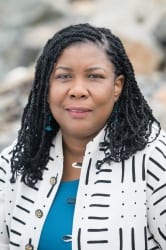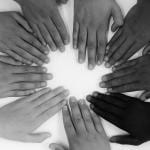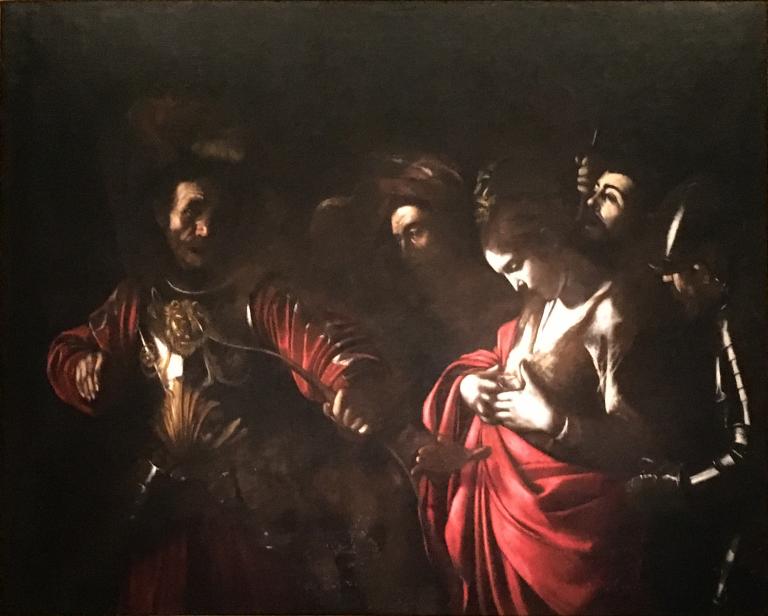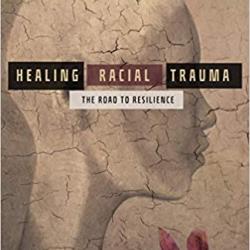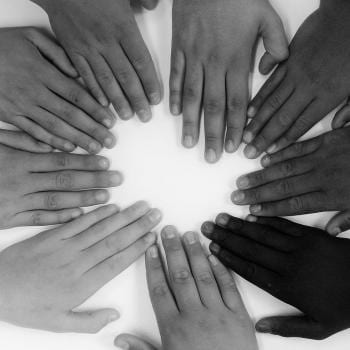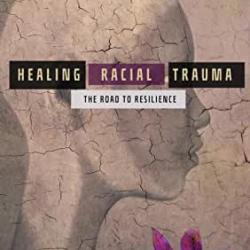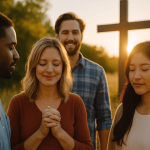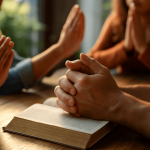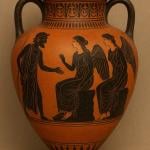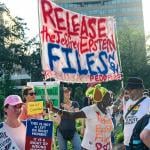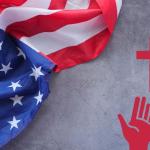A week before the release of the highly anticipated movie, “Just Mercy,” Sheila Wise Rowe released her book, Healing Racial Trauma – The Road to Resilience (InterVarsity, 2020).This resource provides manna from heaven for those traumatized by racial oppression and serves as an invaluable primer for anyone who desires to grow in their understanding and engagement with the battle to combat racism. Her book launch party behind her, Sheila sat down with us to share some additional insights about healing racial trauma and where we find ourselves on matters of race during this election year and the responsibility we all have in working towards overcoming the divide.
In the beginning of your book you define eight different types of racism. Which type has impacted your life most profoundly?
I experienced significant interpersonal and systemic racism when I was younger and later when we were raising our kids. There was so much labeling of people going on and it was everywhere; public schools, Catholic, Christian schools. We tried them all. We moved to Johannesburg, South Africa in 2005 and when we returned in 2016 the racism was relentless, as though everyone had been given carte blanche permission to say whatever and do whatever they wanted—to anyone. The words coming out of the White House gave permission for this behavior and that’s been hard. It gets wearying and I have to be on my knees. The activists around me are literally burning out so building reliance is key to persevering in our day.
On pg. 139 you state, “He (Jesus) destroyed the dividing wall. It’s up to us to stop rebuilding it.” You describe an aspect of rebuilding as taking “positive action.” What does that look like?
I’m excited about some of the positive action I’m seeing here in Boston. The mayor recently spoke in his “State of the City” address about providing money for poor working folks who can no longer afford to live in our city where a one bedroom apartment can cost $2,500 a month. He’s setting aside money to help people in need stay to avoid pushing people out. We can all ask ourselves, what resources can I provide to help people of color stay in my neighborhood? Also, asking the questions, looking at ways racism is systemic, where it is ‘baked in the cake’ and do some necessary repair work. In your workplace, if you know there is an income discrepancy between you and a person of color doing a similar job, what are you doing about it? All of these questions and actions first come from a place on our knees, asking the Lord what he is calling us to do on both a macro and a micro level.
We are living in a culture of rage, a culture contrary to the teachings of the Bible with regard to our neighbors. In the chapter entitled “Rage” you quote Ephesians 4:25-27, a passage about speaking truth to our neighbors, but not letting the sun go down on our anger. Do you think the devil is gaining ground in America because of our unbridled, unleashing of rage?
In the chapter on Rage, Carla is one of the people who discusses the source of her rage and how she deals with it. She attended the book launch party and asked the audience, ‘Can White people make space for our rage?’ When we just pile rage upon rage the enemy is going to have a field day, but we can’t totally demonize rage because that way the root of the problem doesn’t get addressed. It’s about coming to the Lord in lament with our rage. We have to be aware and prayerful, asking him to show us the source of our rage. As we invite him to “take every thought captive and make it subject to Christ” we invite him to take our rage and heal the underlying pain.
You identify some critical steps toward building resilience and healing from racial trauma. You mention journaling and creating art as a means by which you care for your physical body and release stress. Could you describe your process in these areas?
I do journal every morning as part of my quiet time or I find myself scattered throughout the day. I read some scripture and write down what it’s saying to me and then listen for what the Lord might be saying. I also write down how I’m feeling, ‘It’s cloudy and I’m a little depressed today,’ so I pour that out to the Lord in writing as a prayer. I also have an art studio in my basement where I create things, mostly in acrylic. I love to go to galleries and take art classes when I can afford them. Basically, I try to keep my life balanced so that I don’t burn out. As a counselor I encounter people’s pain continually and I give their pain over to the Lord as well as my own.
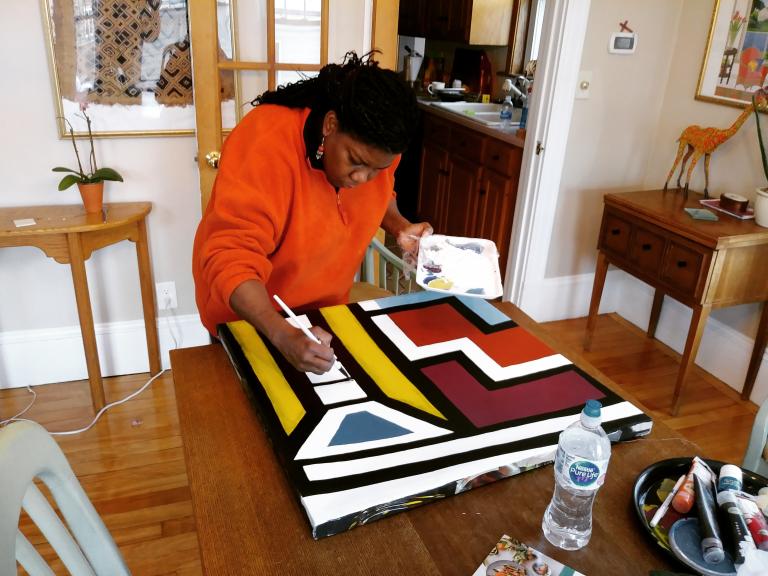
Brian Stevenson’s book, Just Mercy begins with a quote from Reinhold Niebuhr, “Love is the motivation, justice is the instrument.” You use a thought-provoking quote to start each of the chapters in your book, what do you think about this quote by Niebuhr?
We went to the same Assemblies of God church with Brian back in our Cambridge days. We all want to see that we have a God who loves us and that he will bring justice for us, but “Vengeance is mine declares the Lord.” Romans 12:19. He is the giver of justice, not us, and when justice is meted out properly in can be an instrument of love.
You describe in your book on pg. 96 how Liza spent seven years in a church where no one attempted to make her feel welcome, Whites did not initiate engagement with her. How can the church effectively address this lack of love?
The leadership of every church needs to look at places of bias that exist amongst themselves and have a conversation around those areas and address them. Across the board, is everyone made to feel welcome? How are you creating an environment that doesn’t fold into a White worldview? Did anyone notice that all the people on the church’s website are White? How are people of color represented on our worship teams, diversity in worship music and in everything that happens upfront? We, as people of color are always thinking about Whites. Church leaders should always consider the contribution that people of color bring to the life of the church.
In your chapter on Addiction, Tom journeys with the Lord to obtain healing for his pornography addiction and discovers that he is uniquely positioned as a biracial person to become a bridge builder. How can White folks be better bridge builders to people of color?
I state in the beginning of my book, a challenge to White folks, ‘Be open to however these stories may challenge you to be a better friend, ally or brother or sister to people of color.’ Your job is not to minimize, but to see who people of color are in their totality, just as Tom had to learn to do as a biracial person.
Thank you Sheila for your wise words. We are delighted to publish an excerpt from her book, Healing Racial Trauma – The Road to Resilience by Sheila Wise Rowe, InterVarsity Press, 2020.
Chapter One
We need healing and new ways to navigate ongoing racism, systemic oppression, and racial trauma that impairs our ability to become more resilient. Resilience is the capacity to recover quickly from difficulties or to “work through them step by step, and bounce back stronger than you were before.” In relation to racism, resilience refers to the ability “to persevere and maintain a positive sense of self when faced with omnipresent racial discrimination.” Resilience is not an inherited trait; how we think, behave, and act can help us to grow in resilience.
THE INVITATION
In this book you will meet a few people of color along the way and read their stories of oppression, healing, and resilience. I am one of them, an African American woman, author, speaker, trauma counselor, and also a survivor. The others are not random people of color but dear friends and family members whose stories carry lessons for us all. The fact that we are a diverse group is countercultural. Historians have revealed that from the earliest days of First Nation genocide and the enslavement of Africans there has been a concerted effort to keep people of color separated and to develop a caste system of sorts. Rather than seeing the commonality that we have as people of color, we have been grading whose experience is worse. My invitation to people of color is that you might experience your own life story affirmed and acquire new solidarity with other people of color. Also that you will obtain tools to help heal your racial trauma and to persevere on the road to resilience. My invitation to white folks is to be open to however these stories may challenge you to be a better friend, ally and sister or brother to people of color. Perhaps you will hear echoes of your own trauma that you need to address. My hope is to lead you to greater empathy and activism.
People of color know that racism and racial oppression is real. We’ve felt the sting of each racist incident whether it was overt or covert, intentional or unintentional. Yet we’ve often been unaware of the full impact of the racial trauma that remains.
F O R M S O F R A C I A L T R AUMA
Racial trauma is real. Every day in the United States and across the world women, men, and children of color experience racism and witness lives and livelihoods devalued or lost as if they do not matter. The result is that people of color are carrying unhealed racial trauma.
The sin of racism affects us severely and deeply, yet we remain silent or in denial, a response we learned from our ancestors for whom silence meant survival. While we continue to suffer in silence, bearing the wounds of racial trauma exacts a toll on us. There are various ways that people of color experience racial trauma: historical, transgenerational, personal, physical, vicariously, and through microaggression, gaslighting, and moral injury. Unpacking each of these will provide a window into how racial trauma has been transmitted in our own lives and the damage it does to our mind, body, soul, spirit, and communities.
T H E H E A L I N G J O U R N E Y B E G I N S
The magnitude and impact of racism and racial trauma became more evident to me when I participated in a racial trauma conference in Alabama. Monuments, plaques, and other nods to slavery and the confederacy are displayed throughout the state capital, Montgomery. In the city center is the imposing Court Square fountain, the former location of Montgomery’s slave market. A historic marker there states: “Slaves of all ages were auctioned, along with land and livestock, standing in line to be inspected. . . . In the 1850s, able field hands were brought for $1,500; skilled artisans $3,000. In 1859, the city had seven auctioneers and four slave depots.”
Overlooking the city center is the recently opened National Memorial for Peace and Justice, conceived by Equal Justice Initiative’s founder, lawyer, and activist, Bryan Stevenson. The memorial, also known as the National Lynching Memorial, is similar to the Holocaust Memorial, where the words of Deuteronomy 4:9 are prominently displayed: “But take care and watch yourselves closely, so as neither to forget the things that your eyes have seen nor to let them slip from your mind all the days of your life; make them known to your children and your children’s children.” The National Lynching Memorial is a sacred space of remembrance and repentance. The memorial exposes the truth that from 1877 to 1950 over four thousand African American men, women, and children were lynched, often by enraged white mobs, the KKK, and law enforcement. Inside the memorial structure suspended from the ceiling are eight hundred six-foot metal monuments, each engraved with the names of victims and the county where they were lynched. Some counties had one lynching while other had so many that the monuments were covered with names. I was overwhelmed and hoped that I would not locate Accomack County, Virginia, where my people are from. When I could no longer read the names and counties I sat in silence. I read placards along a wall that noted some of the reasons for the lynchings: A black man scared a white girl; a black farmer refused a white man’s offering price for his cottonseed. I slowly walked outside on the grounds of the memorial where there are replicas of the monuments laid out like coffins. When I found Accomack County I was undone, stunned, and angry.
The next day I visited the Legacy Museum, located on the site of former slave-trading quarters. Down a dark corridor directly inside the museum is a startling scene. Holographic images of the enslaved kept in pens. As I approached the images, they literally spoke of their pain and horror: a grieving mom looking for her children, children separated from their mother crying “Mama, Mama,” and the sound of women wailing Negro spirituals. Further inside the museum I was overwhelmed by audio, visuals, memorabilia, and images of racism and racial trauma in shocking detail. More of my painful history laid bare: four hundred years—from slavery, Jim Crow segregation laws, mass incarceration, and the racial injustice continues. Some areas offer bits of hope: references to the civil rights movement and a room with images of freedom fighting heroes and heroines. Some names were familiar; others were new to me. As much as I needed to see hope, I also needed to see the painful truth. I held my emotions in check, but the whole experience was too much for me. I stumbled from the museum onto the sidewalk and hunched over trying to contain my sobs. Then I began to wail. I looked up and saw a white woman, also a conference participant, whose face was wet with tears. Our eyes locked; she gently shook her head and mouthed, “I have no words.”
My mind flooded with the words and stories I’d written of the different forms of racism and racial trauma. It’s one thing to write about it and another to see and feel it in graphic detail displayed in one place. For people of color, those definitions are more than words—they are trauma.
You’ve read about the resilience of the resurrection plant (see chap. 7). I experienced a similar lesson while at the Legacy Museum in Montgomery. Inside, a wall of shelves is lined with
hundreds of large sealed jars. Every jar is labeled with the name of a lynching victim and the location and date of the lynching. Inside each jar are soil and possible traces of DNA collected from the confirmed site of the lynching. This area is like a mausoleum where we remember and honor the dead, and yet there is life. Despite what seems like the absence of sustenance, tiny seedlings have sprouted in some of the jars. These seedlings remind me of people of color. We are more than resilient we are miracles. In the midst of our tragedy and trauma we work, thrive, and struggle, and the Lord continuously saves, brings grace, new life, beauty, and justice. In John 11:25-26 Jesus says, “I am the resurrection and the life. Those who believe in me, even though they die, will live, and everyone who lives and believes in me will never die. Do you believe this?” Our resilience grows as we live and love as if this life is not the end of our story. It is written that Bryan Stevenson “looked at the jars of soil and said, ‘We can grow something with this, we can create something with this that has new meaning.’ That’s because while soil may surround us in death, it also is the place to plant seeds of hope for a new beginning.” Ecclesiastes 11:6 encourages us to do that very thing; “In the morning sow your seed, and at evening do not let your hands be idle; for you do not know which will prosper, this or that, or whether both alike will be good.” Therefore, we pray by faith, live like we’re heaven bound, and get to work scattering our seeds. Last, we receive encouragement from Psalm 126:5-6:
May those who sow in tears
reap with shouts of joy.
Those who go out weeping,
bearing the seed for sowing,
shall come home with shouts of joy,
carrying their sheaves.
Taken from Healing Racial Trauma by Sheila Wise Rowe. Copyright (c) 2020 by Sheila Wise Rowe. Published by InterVarsity Press, Downers Grove, IL. www.ivpress.com

